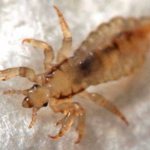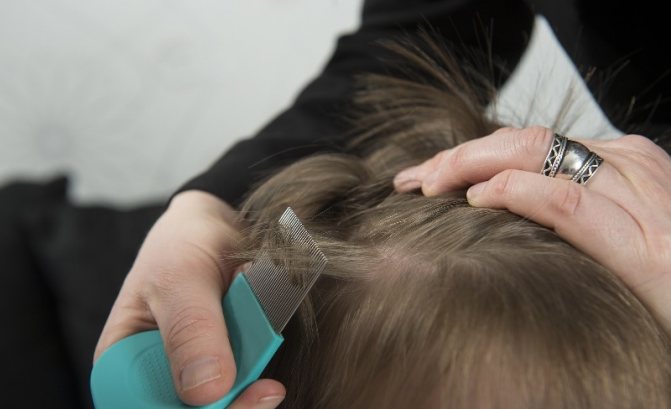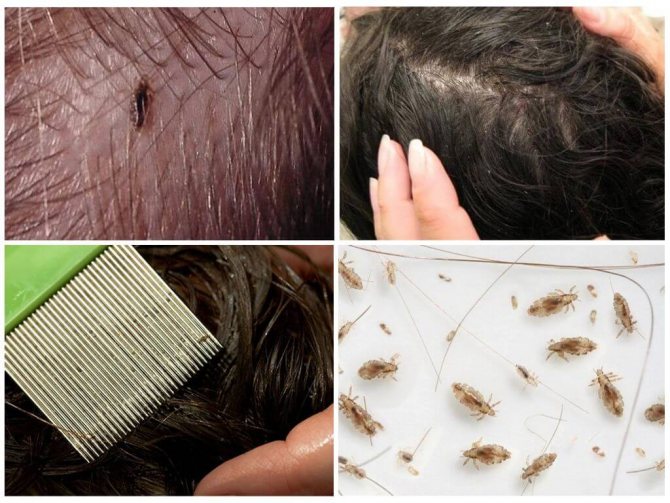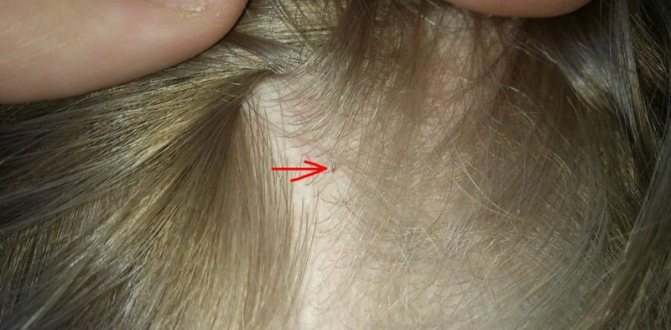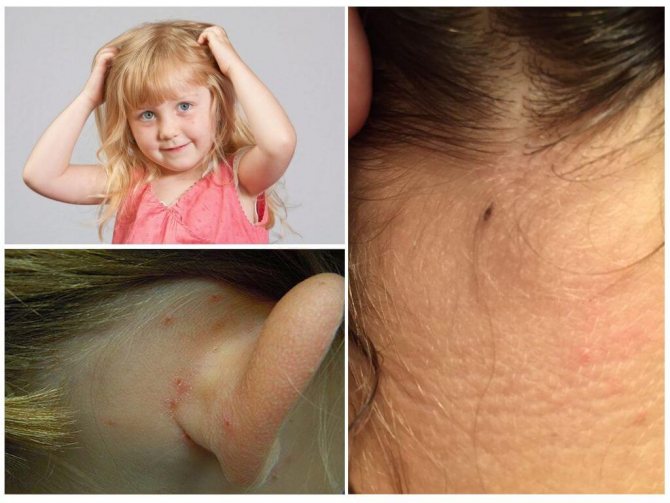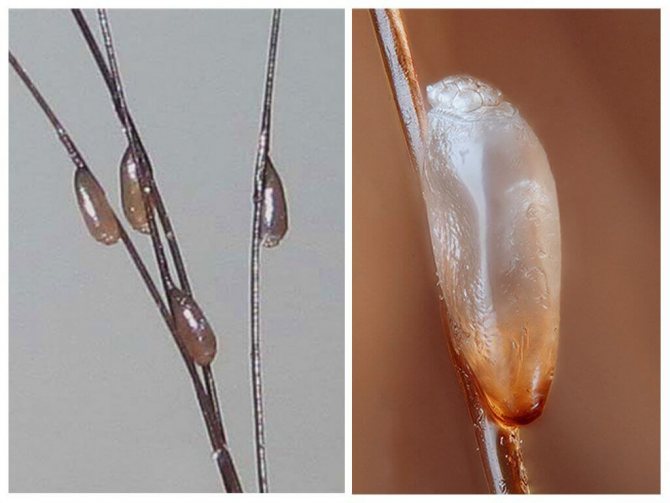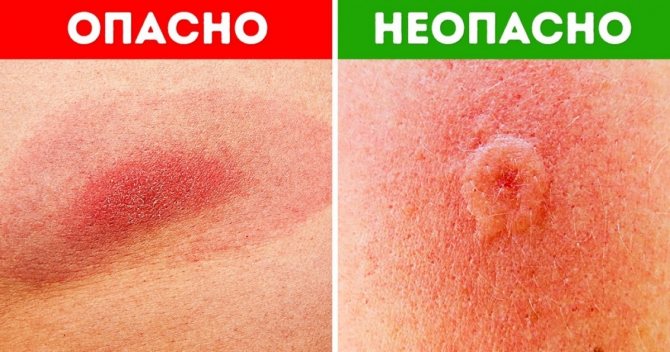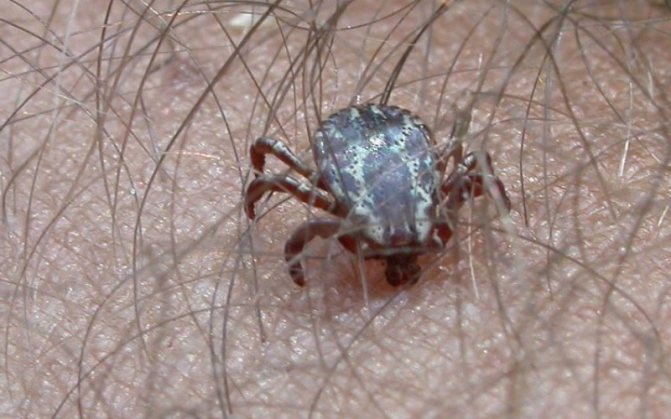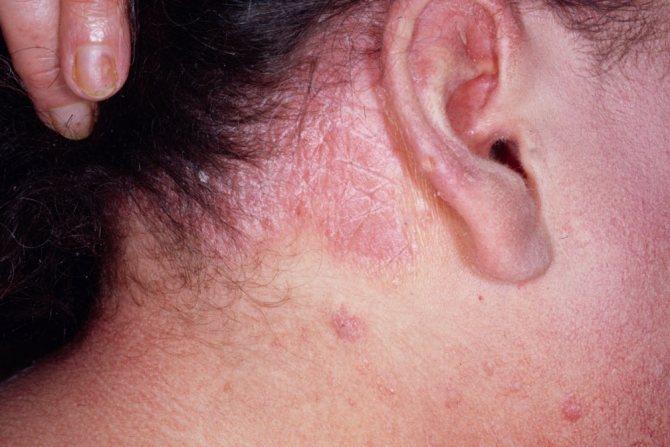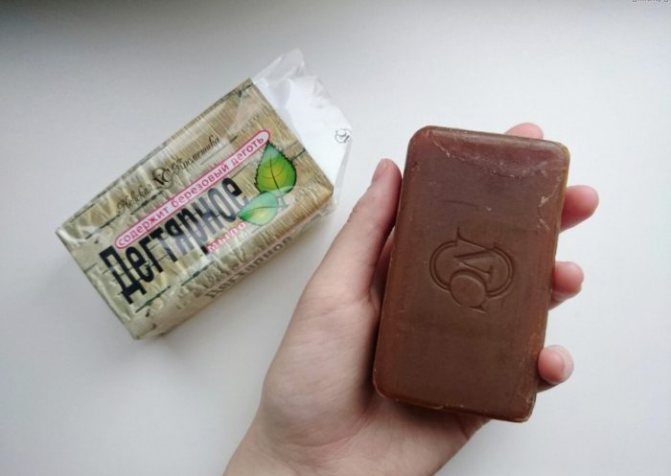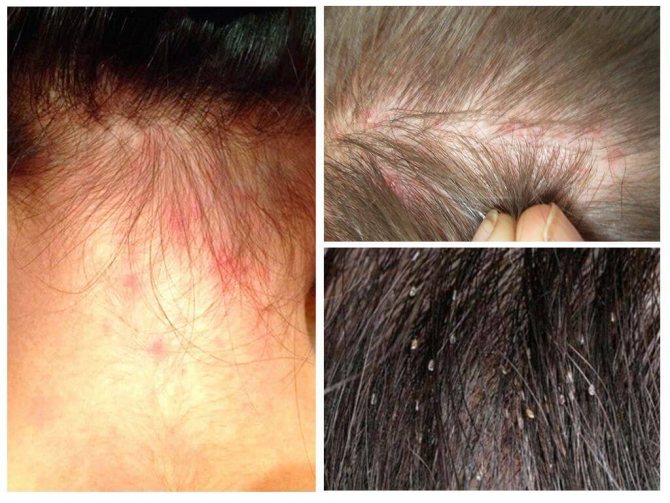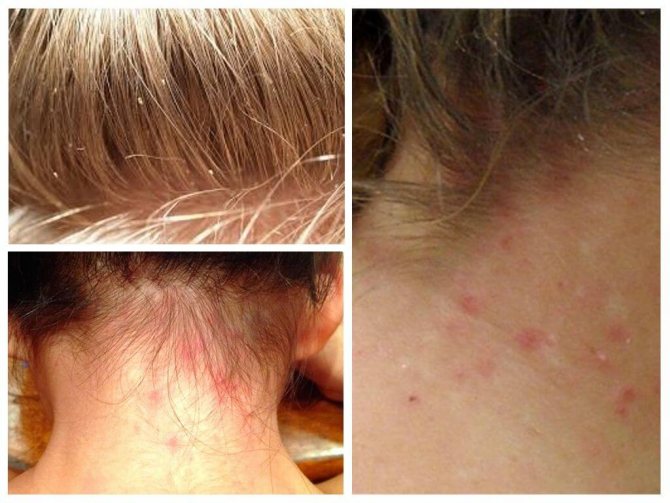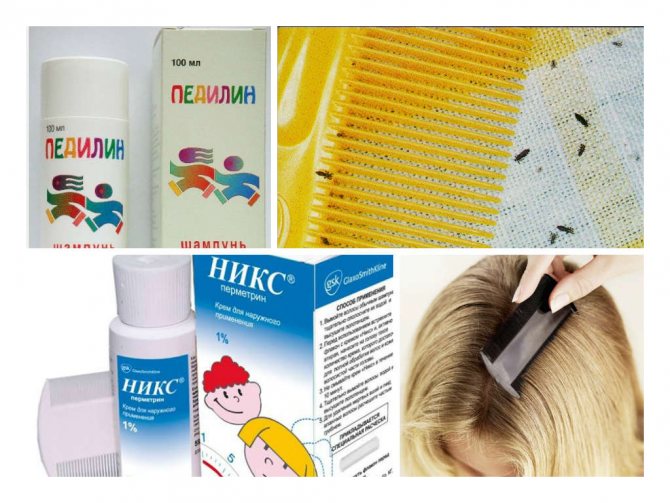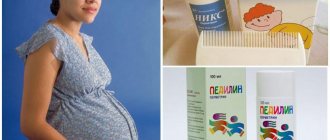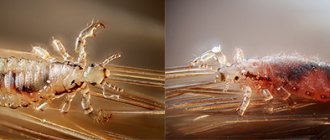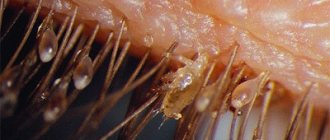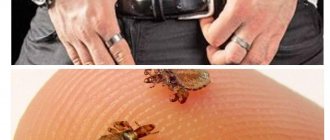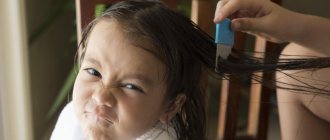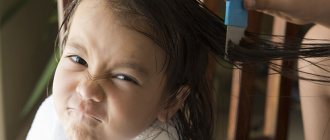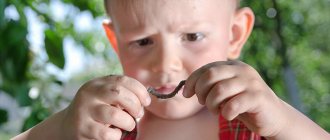Even when parents take good care of their children and maintain the necessary cleanliness of their bodies and things, this does not mean that their children cannot become infected with head lice. Therefore, do not panic if lice are found in a child. Action is urgently needed to relieve children of the discomfort caused by parasites. It should be remembered that with an advanced disease, lice can cause secondary infections, and are also carriers of typhoid.
Description of lice and routes of infection
According to the characteristics of life and places of parasitism, experts distinguish three types of lice that parasitize on humans: bed, head and pubic. The most common cause of head lice is head lice. Any person can become infected with parasites, but more often the disease is recorded in children aged 3 to 12 years. It should be noted that lice cannot appear in a child by themselves, they pass from one person to another. These insects do not know how to jump or fly, so infection occurs only upon contact or use of other people's things.
Head lice live on humans, they cannot exist on animals, respectively, pets and stray animals are not able to infect children with head lice. For parasites, it is completely indifferent how thick the skin of a potential victim is, whether her hair is clean or dirty.
The higher percentage of lice detection in children, compared with adults, is explained by the fact that they are in closer contact in kindergartens and schools, sports clubs, hobby groups, in yards and sandpits. They touch their hair during games, exchange things (combs, hairpins, baseball caps, etc.), and constantly use public locker rooms. If your child has thick, long hair, this slightly increases the risk of infection and makes it harder to spot lice. But getting rid of parasites in such a hairstyle is much more difficult than in children with short hair.
Head lice are small insects (up to 3 mm long) that parasitize the scalp of people. The color is light brown, changing to brown-red after the insects have drunk blood. Six legs, equipped with claws, are specially adapted to move in the hair, which allows them to crawl quite quickly. Lice are actively multiplying, so it is difficult to remove them from a child. They stick their eggs (nits) firmly to the hair of children near the roots, where the temperature is most favorable for their development. The adhesive is so strong that it easily holds nits even when shampooing and brushing. It is clear that getting rid of parasites is not easy. You need to know how to remove them in order to prevent a relapse of the disease.
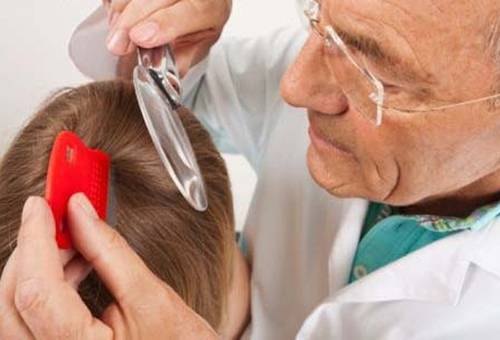
What is pediculosis
Children's head lice is a parasitic skin disease. Its causative agent is small insects - lice, which live on the body of a child and feed on blood. In the places of the bite, the saliva of the parasite remains, causing severe itching. Rash, redness and sores on the skin are possible.
Depending on the type of insect and its habitat, there are:
- Head lice. Lice are gray-brown in color, parasitizing on the head, located at the root of the hair. When the form is neglected, they are found on the eyelashes and eyebrows. The life cycle lasts about 4 weeks.They lay eggs - nits that contain a sticky substance and look like midges in their hair.
- Pubic lice. Lice are found in the genitals and anus. They can be recognized by a short flat body 1-3 mm in size.
- Clothes head lice. It is caused by body lice, which lay eggs in the seams and folds of clothing that fit snugly around the body. They are off-white in color and reach 3-5 mm in size.
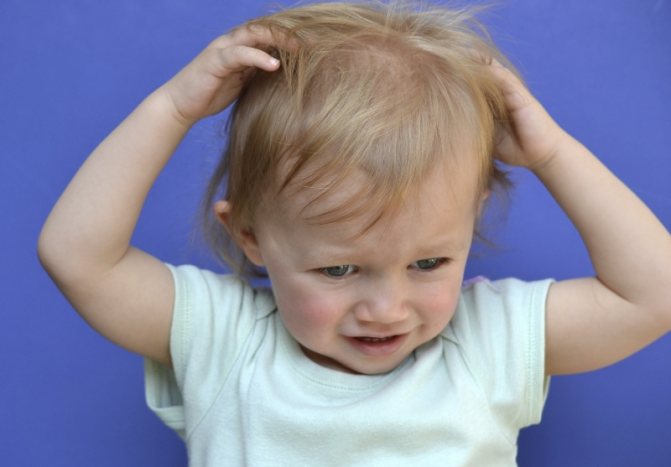

Mixed head lice is extremely rare, when various types of lice are parasitized on the same person. Children are most susceptible to head lice, as they spend a lot of time in organized groups, where such a problem is not uncommon. In the process of communication, the guys are constantly in contact with each other, while lice crawl from an infected child to a healthy one.
What lice and nits look like
If you look at a moose flea through a magnifying glass, you won't want to go into the forest. As long as these annoying bloodsuckers are found there. Here is a brief description of the insect: a strong light brown flat and smooth body about 3 mm long, a head with large eyes and a hard proboscis, plus grasping limbs with serrated claws.
There are also wings about 5 - 6 mm long tightly pressed to the body. The insect uses them to fly over short distances. The flea waits for its prey on the grass or leaves of trees and bushes. When the "object" approaches, it takes off and rushes to the target. It is difficult to crush a bloodsucker, it is easier to "smear" it on something solid.
The insect is very mobile. It constantly fumbles and moves in search of a donor. Deer bloodsucker is a bloodsucking parasite that feeds on the blood of warm-blooded animals. There is a lot of it in Tver, Kaluga, Yaroslavl, Vladimir and other neighboring regions. It also exists in the Moscow region. Mostly in places where deer and elk live.
These are small translucent insects. The parasites do not grow more than 3 mm, they have 6 legs, with which they cling to the hair. They feed on blood.
Lice lack the ability to fly and jump high, but they quickly move through clothes and hair. Therefore, when a sick child enters the team, the parasites quickly spread among other children. The peak incidence occurs in the fall.
A female head louse is capable of laying more than one hundred eggs in her life. Nits on children’s hair look the same as on adults. They look like grains of dandruff. But the main distinguishing feature of nits from seborrhea is the inability to just remove them from the hair. The egg is firmly attached to the hair with a sticky substance.
Sometimes these insects are confused with bed bugs, fleas or ticks. To make it easier to distinguish head parasites from other insects, it is worth knowing what lice and nits look like. To do this, you can look at the photo of lice in children in their hair.
Some adults notice that the insects living on the scalp of a child are different from each other. Parents begin to worry that the child has "picked up" several different pests. But this is not the case. Before becoming an adult, the louse undergoes three molts. With each new change of the chitinous cover, it changes its appearance. The third molt turns the parasite into an adult.
Pediculosis is a common disease among children under 12 years of age. Despite this, several myths circulate around him:
- Lice in children come from the nerves. Some mothers are sure that because of the stress they have experienced, insects start up in their heads. But this is not true. Lice on nerves cannot start, although there are theories to defend this statement.
- Pests are carried by animals. The parasite can only feed on human blood. A louse will not survive on a cat or dog.
- Insects are turned on by dirt. Lice run away from an infected person and are more comfortable on clean hair.
We offer you to familiarize yourself with: Why the hair on the head itches.Elimination of itching with folk remedies
You can find lice in a child after a camp or swimming in a pond. The insect quickly moves to the hair of a healthy person and begins to multiply rapidly.


There are several reasons for infestation with head lice, the most common of them are:
- Close contact. The parasite will instantly run over to the child, as soon as he touches the hair with an infected person.
- Swimming in bodies of stagnant water. Warm water is a habitat for parasites. There, in search of a new host, lice can live up to three days.
- Use of common hats, hairpins, combs. Girls love to swap jewelry and borrow each other's hairbrushes. Lice infestation occurs through these objects.
- Long stay in the children's team. The child often returns from the camp with "pets" on his head. Also, the head type of lice instantly spreads among children in kindergartens, schools and entertainment centers.
- Using public transport During rush hour, the child is in contact with other people, and no one can guarantee that everyone around is healthy. For a five-minute trip, the louse will have time to get over the hair of the child from the other head.
Some parents, in an attempt to protect their child from infection with head lice, wash their hair every day. But, once in the children's team, the child still gets sick. Then dads and mothers start looking for photos of lice and nits on the child's head, thinking that other insects are crawling in their hair.
Infection methods
The opinion that insects spread only among socially disadvantaged children is erroneous. According to statistics, every fifth child is susceptible to this disease. There are several main ways of infestation with head lice:
- In the absence of sufficient space between beds in preschool institutions. Often furniture is close to each other, allowing vermin to move easily over it.
- The use of other people's items of clothing and household items. Lice can inhabit combs, hairpins, headbands, as well as in the seams and lining of hats.
- Carried away by vigorous outdoor games, children touch their heads, while parasites are shaken off onto the body of a healthy child.
- Infants can get lice from sick parents when carried in their arms or while in the same bed.
- Infection is possible in public baths, swimming pools, hairdressing salons with insufficient sanitization of places and public items.
Prophylaxis
Like treatment, each disease has its own preventive measures. To warn a child against lice disease, it is worth teaching him to use only his comb, hats and not allowing other children to take personal hygiene products. In public places (in cafes, schools, circles), we recommend hanging outerwear on a common hanger, having previously turned it inside out.
For the prevention of fleas in animals, special flea collars for cats and dogs are used. Bathe pets using preventive shampoos. As for the prevention of fleas indoors, it is enough to keep the house clean. In order not to face the problem of parasites under the skin, you should not drink unboiled water, swim in stagnant bodies of water (especially in countries with hot climates), and eat raw meat. And Demodex, as already mentioned, will not create problems if you follow the rules of hair and skin hygiene, using suitable cosmetics.
How to find parasites on a child's head
The main symptom of the disease is intense itching. It mainly manifests itself behind the ears, on the back of the head and in the area of the temples. Red spots are visible at insect bites. Observing the behavior, it is easy to understand that the child is infected. He constantly scratches his head, becomes restless and does not sleep well.
To independently detect head lice, you should carefully examine the occipital and temporal regions of the head under a bright light source. On long hair, thin strands are separated with a comb. Nits are the easiest to see. Outwardly, they look like small white dots in the hair and resemble dandruff. But just shaking them off will not work, and when crushed, a characteristic click is heard.
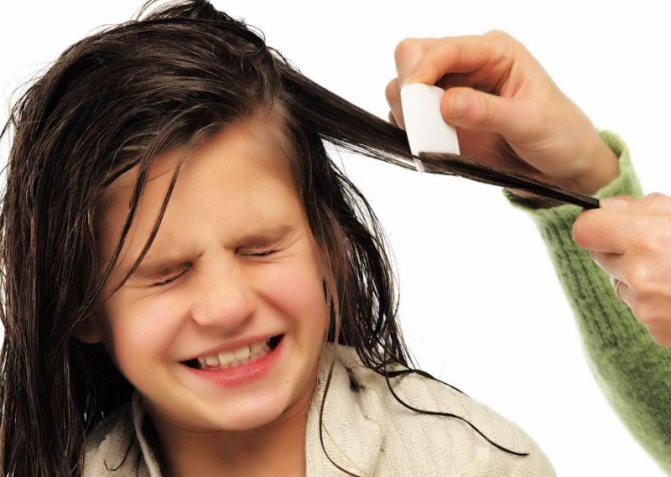

In a medical institution, a Wood lamp is used for examination. Under its influence, nits emit a bluish glow. If it was possible to identify parasites, all persons who are in direct contact with the child are subject to examination.
Life cycle
In its development, the head louse goes through several stages:
- Females lay white eggs - nits. They adhere very well to the hair right at the very roots. Sometimes you can see dead nits that are brown in color or empty light-colored nits that look like dandruff.
- Nits grow from 7 to 9 days. Then it develops - a nymph, the so-called cub.
- After 10-12 days, the nymph turns into a mature louse, which is ready to reproduce and give offspring. The louse lives for 28-30 days, and during this time they lay 200-300 eggs.
Safe treatments
The destruction of parasites is carried out at home. To completely get rid of lice, an integrated approach is required, in which mechanical action is used along with chemical preparations.
Treatment of head lice on the head carried out by medicines in the form of shampoos and hair treatment solutions. Only a doctor can prescribe them, since all drugs have side effects. The most popular are the following lice killing agents:
- Shampoo "Paranit". The active ingredient is clearol. Plugs the airway of parasites, causing them to suffocate. Does not contain toxins, therefore it is the safest preparation.
- Con. The active ingredient is permethrin. Has a toxic effect on insects, from which they die. Not recommended for children under 3 years of age.
- Spray "Nyuda". The active ingredient is a two-phase demiticone. The insecticidal agent destroys not only adults, but also nits. Convenient to use.


Before using pharmacy drugs, you should find out the contraindications and take precautions. It is important to take into account the age and individual characteristics of the body, for example, the presence of skin diseases, allergic reactions. The use of chemicals is not recommended for infants and pregnant women.
In order to effectively combat nits and lice, as well as in the presence of contraindications for exposure to drugs, a mechanical method is used. It consists in combing the hair with a fine comb. Starting from the temporal zone on the head, strands of hair are gradually sorted out, clearing them of parasites. It is best to do this by the window or on the balcony, where there is sufficient lighting.
Processing infected items
To finally cure head lice means not only to get rid of the insects themselves and their eggs on the head, but also to process the things that the infected person has come into contact with. Live nits may remain on pillows, comb, clothing, and hair accessories. And if they are not destroyed, new parasites can hatch from them. How to properly handle things, see this video:
Fortunately, you won't have to spend a lot of time on processing things: nits die with prolonged exposure to hot (about 70 ° C and above) water. Therefore, to remove the nasty insects once and for all. All fabric items must be washed at the highest possible temperature, and combs and other hair appliances should be boiled or simply kept in hot water for a long time.After that, eggs that could remain on things should die, which means that the danger of re-infection is eliminated.
How to save long hair from head lice
If lice appear on long hair, it is not necessary to cut them. The main part of the parasites and their larvae is located in the root zone, therefore, it is enough to treat about 5 cm with chemicals, starting from the hair roots. Then the hair should be combed to one side and fingered in small strands, destroying the remaining parasites with your hands.
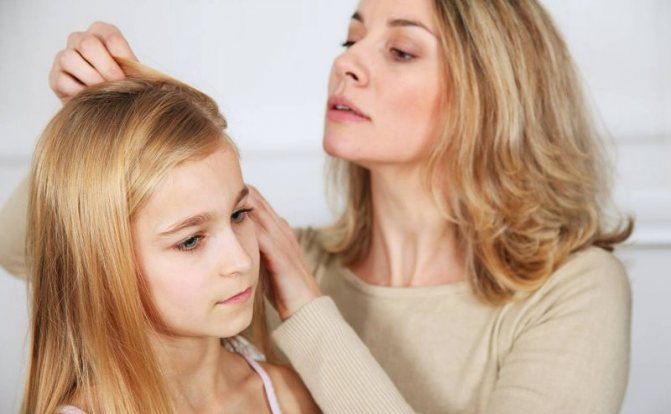

Most often, girls with thick long hair are exposed to head lice.
Reproduction
Reproduction of lice takes place by laying eggs on the scalp. The sticky secret, which hardens perfectly in the air, promotes good attachment to the hair and further helps to better preserve the future generation. Such growing offspring requires a lot of energy from adults, so they eat a lot from 3 to 10 times a day.
Lice have a strong and multi-layered shell. It helps protect against high temperatures and certain chemicals.
The incubation period of nits on the hair is from 5 to 9 days. Insect reproduction depends on external influences. The more a person is in a cold room, the longer the growth of the parasite takes.
The ideal temperature for lice breeding is 24-30 ° C. If it drops below 20, the reproduction process slows down or stops altogether.
The transition to an adult occurs in 19-23 days. During this time, the larva goes through all stages and becomes capable of reproduction. The reproduction of parasites is very fast. Females mate with males immediately after leaving the nymph. One population is enough to fertilize all the eggs in the body. Then she lays 2-4 eggs a day. Throughout her life, one female lays about 140 nits.
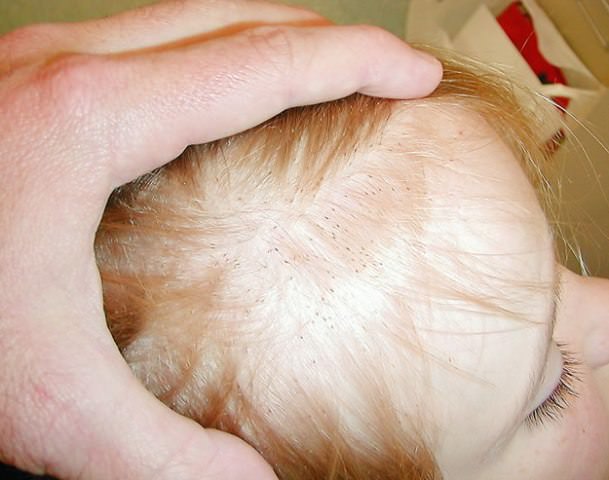

Is there a predisposition to head lice
The main reasons for the spread of lice are in violation of the rules of personal hygiene and contact with carriers of parasites. But there are several factors of an individual's predisposition to head lice:
- living conditions that do not meet sanitary standards;
- insufficient care of the scalp;
- long hair;
- lack of control over the appearance and health of children by parents.
It is necessary from an early age to teach the child to use only their own things and objects. Girls should braid so that their hair does not come into contact during active play. The scalp should be checked periodically for lice. It is recommended to wash bedding and towels at a high temperature and dry the pillows in direct sunlight.
No one is immune from parasite infestation. Even the most prosperous family can face this problem. Having found signs of head lice, it is important to explain to the child that he has nothing to be ashamed of, and start treatment as soon as possible.
Why exactly children?
Many people mistakenly believe that the causes of head lice in children are associated with sloppiness and poor personal hygiene. This is not so: anyone can get it, and the disease has nothing to do with hygiene. To become infected with lice, it is enough to use the patient's comb, lie on his pillow, or just try on his hat. Sadly, children, with their activity, have a much higher risk of contracting parasites than adults. Children exchange toys and hairpins, intertwine with hair, in camps they can lie on someone else's pillow, in the end they fight. Any such interaction can potentially lead to infection, which is why lice are very common in children compared to adults.
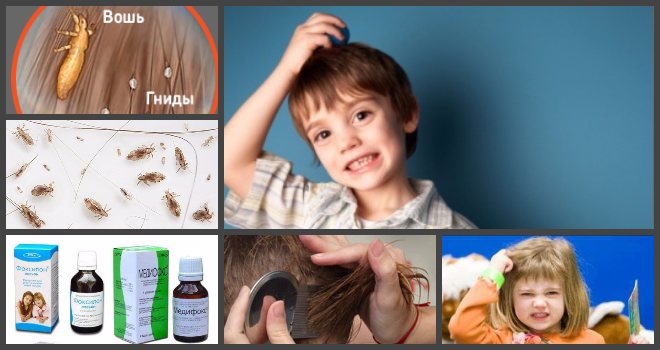

Since the symptoms of the disease do not appear immediately - it must take some time before the body "notices" a foreign enzyme in the wounds - not everyone can quickly remove the lice before they are passed on to someone else. The child, suspecting nothing, carries insects further, on pillows and sofas in his home and on the hair of his peers.
By the time the head begins to itch, the whole apartment and a dozen more people will be infected with lice.
Fortunately, dealing with disgusting insects is a common problem, and methods of solving it have made great strides in recent decades.

